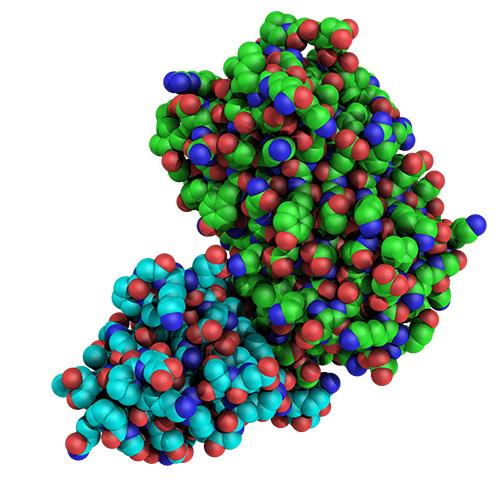
Nanobodies / VHHs
Unconjugated primary single-domain antibodies
VHHs, also termed Nanobodies, are derived from heavy chain only antibodies of Camelids. ChromoTek’s VHHs are well characterized and validated. Because the molecular weight of these single-domain antibodies (sdAb) is just about 15 kDa, VHHs are only one-tenth the size of a conventional IgG antibody (150 kDa) or less than a third the size of a Fab fragment (50 kDa).
Properties:
- Small size
- Single poly-peptide chain structure
Applications:
- Suitable for conjugation to dyes, biotin, beads, surfaces etc. via NHS ester reaction

Structure of GFP-GFP Nanobody complex.